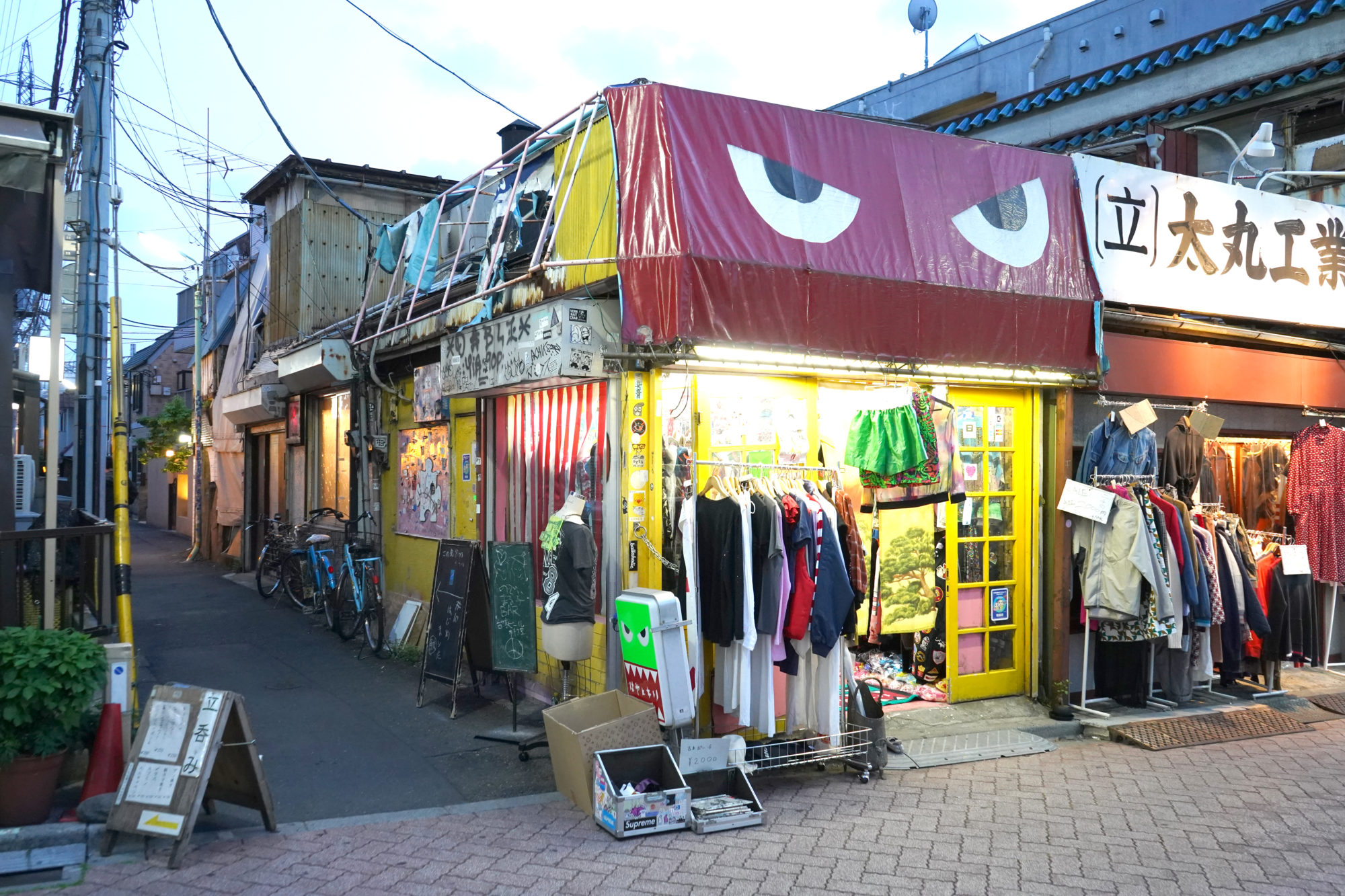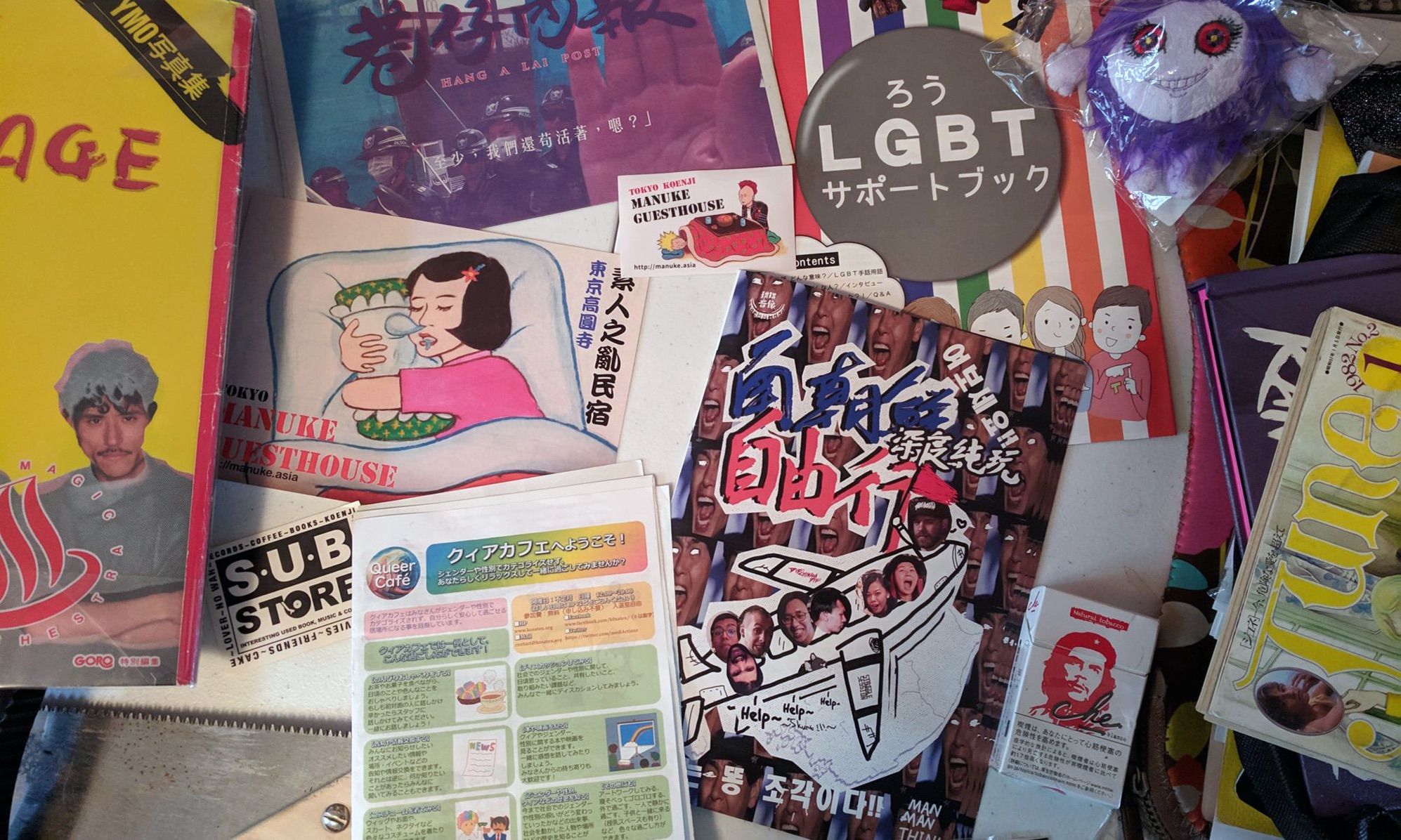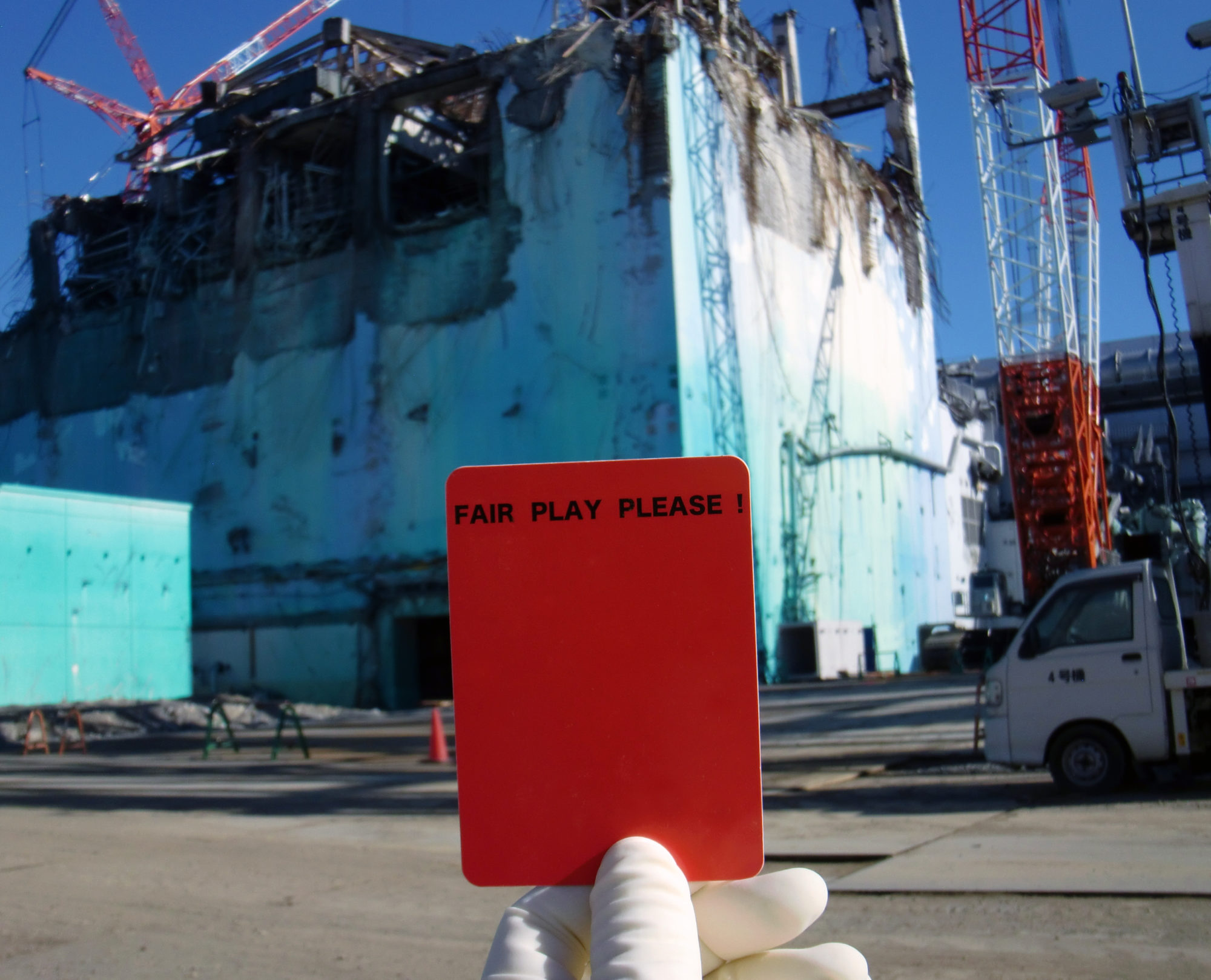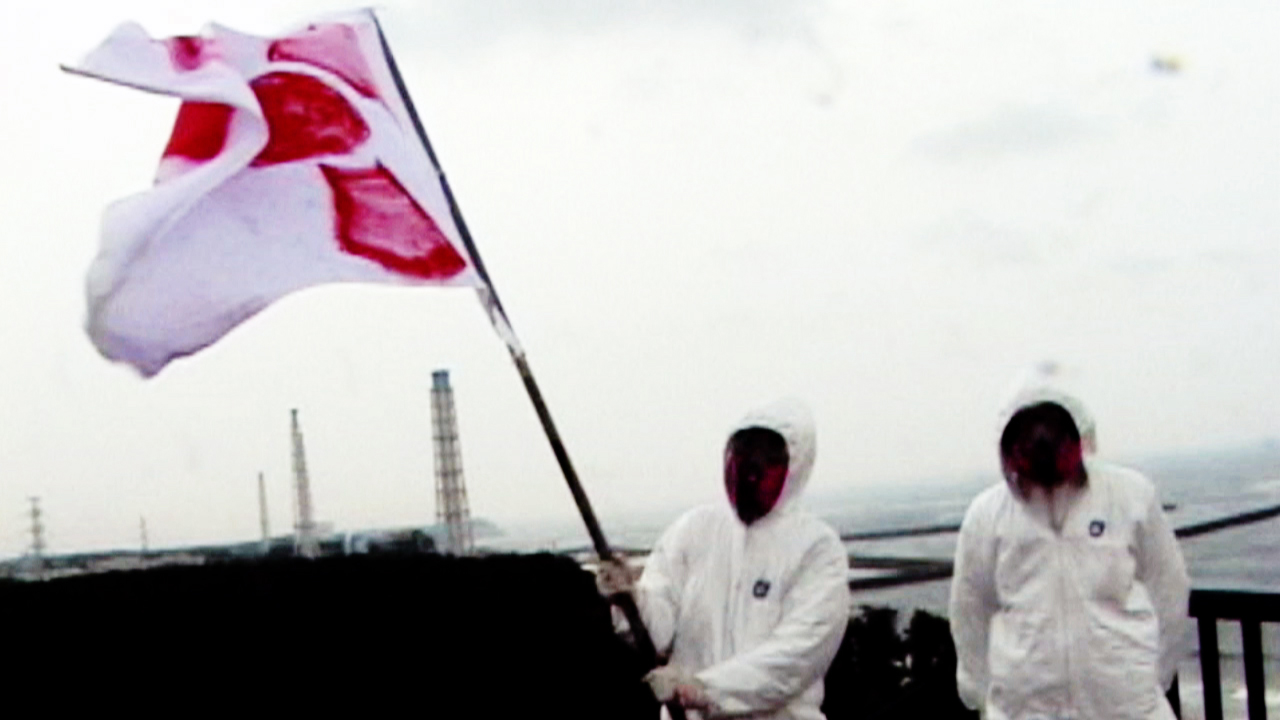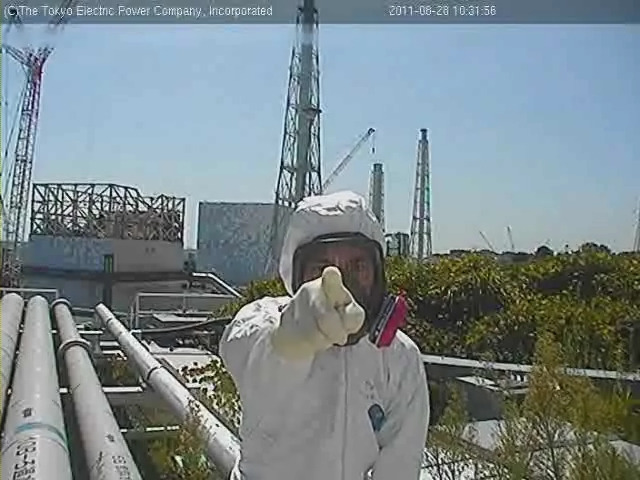The Energy Paradox
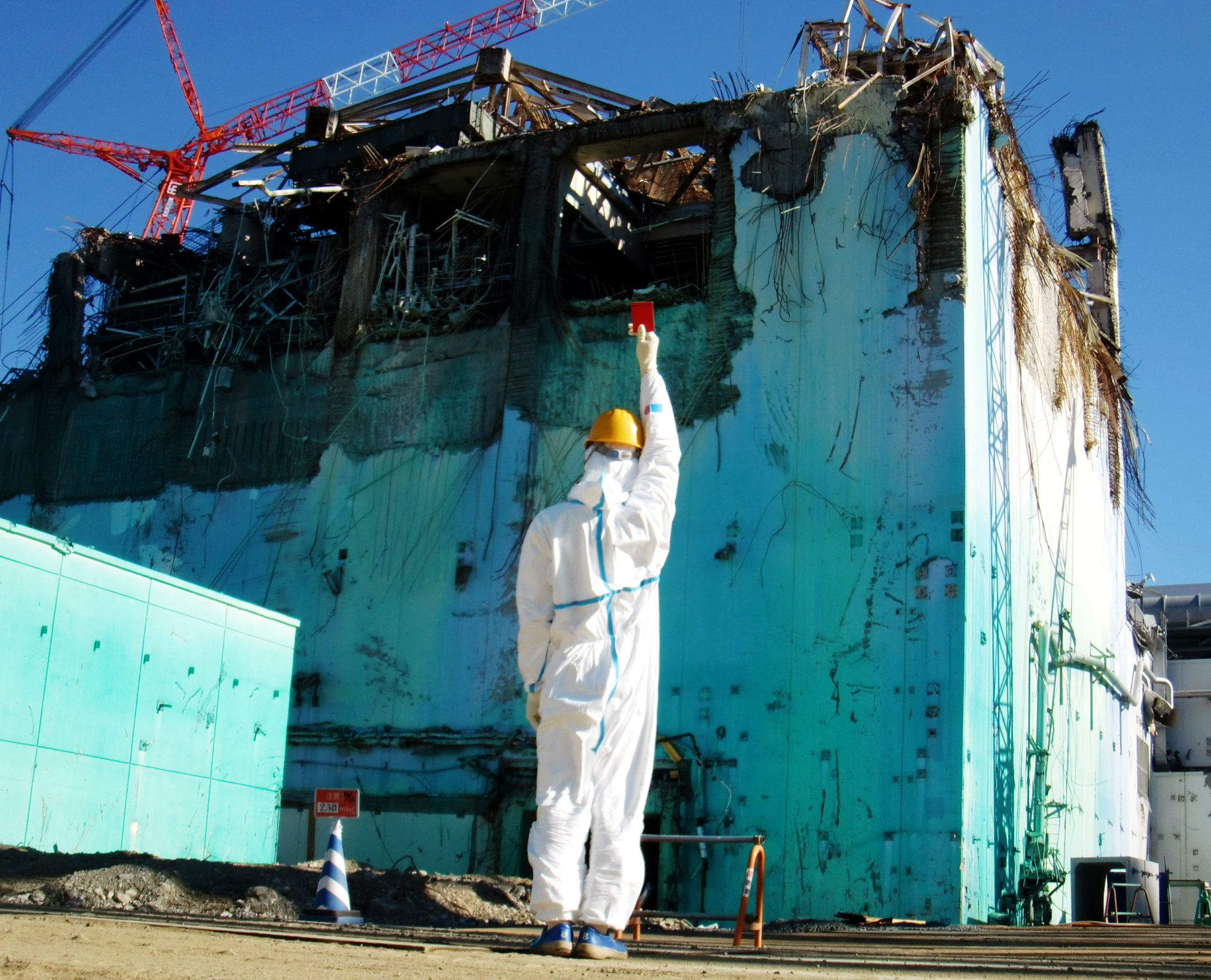
Chim↑Pom, Red Card, 2011 [courtesy of the artist and MUJIN-TO Production, Tokyo]
How is the paradox of energy production—a life-affirming resource that through its destructive byproducts accelerates us toward the event horizon of collapse—being contested by artists and cultural workers?
Share:
Large-scale energy production has a short history bound up with 19th-century industrial capitalism. This production of energy has a clearly defined, highly regimented grid, wherein we can literally trace the lines of power back to its source. However, the material realities of the process leak and spread throughout the environment, remaining largely invisible and borderless—waste such as mine-tailings and fracking chemicals enter groundwater; methane and carbon dioxide from natural gas production and storage escape into the atmosphere; radiation seeps from nuclear power plants daily. These contaminants roam free, outside of any grid or restraint. They are what theorist Sabu Kohso terms “masterless objects,” which enact a slow violence inside bodies and organisms.1 They expand into the world like the negative atheology of capital itself, what Mark Fisher described as an ideology with a missing center: “it is not that there is nothing there—it is that what is there is not capable of exercising responsibility.”2
The 2011 triple meltdown of nuclear reactors at the Fukushima Daiichi Nuclear Power Station brought the danger of invisible energy production into clear view. Energy production, the source of a life-sustaining resource, transformed through the meltdowns and explosions at the plant into a pervasive threat to people and nonhumans alike via contamination of water, food, and air for years or even decades. It became urgent for artists and cultural workers to respond to this potentially omnipresent and yet senseless danger—as humans can’t feel, smell, taste, or see radiation. One point of entry for artists to contest invisible forces was through representation—providing interpretive images of radioactive particles and depicting the social relations of a corporate environmental disaster in which the government was an enabler, for example, gave shape and form to the threat that is leaking, even now, into the atmosphere and ocean.
Another tool developed by artists and cultural workers to contest invisible, long-term catastrophe—one that perhaps plays an even more critical role than that of representation—came in the form of collective dissent. Amid anxiety and uncertainty in the aftermath of the meltdowns, a loose collective of artists, musicians, and cultural workers stepped forward. Called Shiroto no Ran, which in English translates to amateur riot, it mobilized an important protest, not in front of the prime minister’s house or the national legislature, but in the Tokyo residential neighborhood of Koenji, where many of the collective’s members lived. This locally situated activism led to a raucous turnout of 15,000 people, according to reports of the organizers, with floats carrying sound systems, artists, young people, and families—a cross section of society who clamored to raise their diverse voices. This first protest galvanized a mass movement of hundreds of thousands, setting off the first widespread protests in the country since the 1970s.
Hayatochiri used clothing store affiliated with Shiroto no Ran, located in the Koenji neighborhood of Tokyo [photo: Kyun-Chome]
An old saying states that in Japan there are two things that are always assured: fresh water and security. The islands’ climate provides ample rainfall, rivers, and lakes, as well as a state security apparatus that has maintained intensely regulated domestic tranquility. The indiscriminate dispersal of radiation across parts of the northern half of Japan called these two fundamental aspects of life into question. Whether water was safe to drink became unclear. The government had allowed a nuclear meltdown and lost many citizens’ trust through a largely opaque and mismanaged response. This invisible, long-term catastrophe had disrupted the core tenets of how society should function to sustain life.
Shiroto no Ran was essential in collectivizing dissent to advocate for a different mode of living, one that could sustain life. The group’s history of collaboration to organize unauthorized concerts and alternative exhibitions in Koenji manifested in these alternative modes of cultural production—an insubordinate approach—and from a desire to create and sustain a different social ecology. In a neoliberal society that encourages conformity and the mistake-averse shifting of blame, art became a training ground for developing different modes of being that necessitated insubordination in order to produce spaces where different ways of living could unfold. Whereas the concerts and exhibitions served as temporary spaces for such collective experimentation, members of Shiroto no Ran also developed more long-term spaces in their neighborhood, such as resale shops for recycled clothes, a bar, and a guesthouse.
During the widespread movement that stemmed from Shiroto no Ran’s first protest in Koenji, people would gather in the governmental district of Tokyo to demand change. One target of this change was nuclear power, which accounted for 30% of Japan’s electricity supply. Public pressure forced all such production to cease, and even now, only a quarter of commercial reactors are presently operating. This radical shift in energy production opened a new space of potential for sustaining life. Sustained campaigns for alternative energy—and the desire to have more accountable, small-scale producers—broke up the previously concentrated power of prefecture-wide electric monopolies. This ongoing shift from a centralized corporate monopoly to community production has started to give energy autonomy to people with their own solar or wind arrays, whose output could be shared, ensuring sustainable, locally based forms of energy production.
Screen grab from Art & Labor, episode 38, 2019, Art & Labor website [courtesy of artandlabor- podcast.com]
Later in 2011, with Occupy Wall Street in New York, historian Yates McKee would call this moment “the end of socially engaged art.”3 In Japan, Shiroto no Ran helped to initiate a mass movement that shifted the nation’s energy policy, which was just the beginning of a new turn for art in Japan. The Fukushima catastrophe fundamentally affected residents of Tokyo and the north of Japan, giving new urgency to the question: how do we want to live together? Theorist Sabu Kohso traced the ways activists—using methods that can also be applied to artists—responded to this question in two manifestly different modes. Some moved from Tokyo to Kyushu or farther south—away from the disaster in the North—in efforts to set up small-scale communities of affinity, to work together to produce a different way of life. Among them was artist Kyōhei Sakaguchi. Other artists became involved in “those who went north,” a cultural phenomenon of relocating to areas affected by the earthquakes, tsunami, and/or nuclear radiation, to help or to volunteer.
The Tokyo-based collective Chim↑Pom went further than most in its response and merged going to the affected areas with its practice. The radioactive contamination prevented media from getting close to the nuclear power plant, and the only images trickling out were ones released by the power station’s owner, Tokyo Electric Power Company (TEPCO). Negotiating the unique conditions produced by the radioactive fallout, Chim↑Pom staged a trip to the site of the power plant as a form of critique and to take independent images of the ongoing disaster. Some of its members went to the area around the power plant 20 days into the unfolding crisis. Their willingness to go into the highly contaminated area of the plant was encouraged by their relative freedom—all of the artists were in their late 20s or early 30s, none were married, and none had children—though this situation was not necessarily one of choice. As sociologist and art critic Yoshitaka Mōri points out, Chim↑Pom’s members are part of the “lost generation,” which came of age in the wake of the 1980s bubble economy, when it was difficult to find steady employment.4 Whereas many members of the media, who were staying at some distance outside the evacuation zone, probably held “salaryman” positions—stable middle-class employment that was a cornerstone of the postwar economy and family structure in Japan—Chim↑Pom did not partake in that normative culture. Chim↑Pom’s members were products of economic and structural social exclusion—mainly poor, and only one member having gone to university—who refer to themselves as kasu, a vulgar term meaning a leftover or useless byproduct, also commonly denoting subhuman status.
Chim↑Pom, Red Card, 2011 [courtesy of the artist and MUJIN-TO Production, Tokyo]
Yet self-identification with this worthless caste did not diminish members’ concern for their own lives. Chim↑Pom’s sole female member, Ellie, for example, did not join the trip to the power plant, as there were concerns about the effect on any future pregnancy; however, she did go on other trips to Fukushima. In addition, all of the members were fearful during their trip and wanted to limit their exposure. Caught in the dangerous double bind—radiation and precarity—produced by the postwar economy, Chim↑Pom embraced the latter condition to shed light on the opaque source of the crisis. Under the dangerous conditions of proximity to the plant, and transcending the practice of site-specificity, the collective enacted the work Real Times, wherein members went to an overlook beside the smoldering plant—still in the process of melting down—and brought a white flag of surrender. The members spray-painted the red sun to symbolize Japan and then placed the radioactive sign around it to symbolize the emergence of a new age, in which consumer utilities turn against their masters and leach into the landscape. Chim↑Pom captured these strange contradictions inside the evacuated area, where even the media wouldn’t go to report. Members of the collective shared their independent images of the destroyed plant and the resulting video of their action through the alternative infrastructure of an exhibition that took place soon afterward.
Real Times was part of a series of critical interventions undertaken in the affected areas. Other artists such as Natsumi Seo, Haruka Komori, and Kota Takeuchi merged the two modalities outlined by Sabu Kohso—community formation and direct help to people affected by the crisis. All of these artists moved from Tokyo to resettle in Fukushima or the tsunami affected area.
Chim↑Pom, Real Times, 2011 [courtesy of the artist and Mujin-To Production, Tokyo]
In particular Takeuchi’s practice altered the politics of daily labor through his nonart employment. After the meltdown, Takeuchi took a job as part of a transient working class who were employed in the clean-up operation. His move to Fukushima highlights the role of the artist as a concerned, compassionate citizen willing to intervene by working as a paid laborer. This gesture weds artists’ care for others with the necessity of supporting themselves outside of the art market. An important distinction here is that the employment came first and the artwork developed later. This practice is distinct from artistic engagement with sites of disaster with the sole purpose of creating art—an approach that risks “parachuting” into a context to produce work or to extract images from the affected area. Takeuchi’s practice depended upon the labor relation with the site, and from this work grew a mode of speaking with others and for himself through situating himself more deeply within the site. Takeuchi has maintained this form of long-term relation and is still based in Fukushima today.
As part of this practice a Tyvek-suited figure appeared on a live TEPCO webcam stream that showed the inside the power plant; the figure stood still and pointed directly into the center of the camera’s lens in a powerful gesture sustained for 20 minutes. It alluded to the complicity of people, safe in their electrified homes, as being entangled in the web of production and consumption that underlies the disaster. Takeuchi, who worked at the plant at the time, claims to be the “agent” of Finger Pointing Worker, whose anonymity represents precarious workers and could be inhabited by anyone. Putting Finger Pointing Worker’s body on display draws attention to those bodies sacrificing their safety in the zone and maintains the artist’s agency through the performance’s self-reflexive intention. Via mobile phone, he watches himself in the camera’s live feed to place his finger directly at the center of its shot. He appropriates the format and duration of Vito Acconci‘s film Centers (1971), made the same year the power station went into operation.
Finger Pointing Worker, Pointing at Fukuichi Live Cam (still), 2011, 24:50 minutes [courtesy of the artist and Kota Takeuchi]
Finger Pointing Worker, Pointing at Fukuichi Live Cam (still), 2011, 24:50 minutes [courtesy of the artist and Kota Takeuchi]
The gesture appears to be a risky action by a worker—or an artist/activist posing as a worker—possibly trespassing and undertaking a guerrilla action. Takeuchi’s method of following the rules showed prescience. While TEPCO was having issues with transparency and the release of information, many of the workers in and around the plant were contract laborers. They worked for smaller subcontractors, which in the immediate aftermath silenced their workers through sontaku, a form of social peer pressure and preventive censoring that has become a particularly important feature in post 3/11 Japanese society and culture.5 The Finger Pointing Worker neither brought filming equipment into the plant nor made illegal recordings, but instead used the existing video streams available to the public. Furthermore, no statement was made in the video, the silent gesture was simply uploaded to YouTube. This choice transcended language. The unclear intentionality of the gesture stokes critical imagination, accelerating the image’s circulation. The ambiguity of the work also defies simple explanation, potentially negating its use value as a form of visual activism.
Energy production can at times be the invisible infrastructure that enables the production of life, a form of power that we have come to rely on as being integrally bound to the project of modernity. Cultural production is essential to the notion of how we live together: the use of language, the creation of images, the representation and transmission of events, the core production of our humanness. Art’s porous relation with the surrounding world is, at its core, a form of production wherein responsibility is critical. Art commits to certain images, texts, and forms of production upon which artists must stake their reputations and, sometimes, their lives.
This feature originally appeared in ART PAPERS “Energy Structures” Spring/Summer 2019.
Jason Waite is an independent curator and cultural worker focused on forms of practice producing agency. Recently he has worked in sites of crisis amid the detritus of capitalism, looking for tools and radical imaginaries for different ways of living and working together. He co-curated Don’t Follow the Wind, an ongoing project inside the uninhabited Fukushima exclusion zone; The Real Thing?, Palais de Tokyo, Paris; Maintenance Required, The Kitchen, New York; and White Paper: The Law by Adelita Husni-Bey at Casco—Office for Art, Design and Theory, Utrecht, where he was curator. He holds an MA in art and politics from Goldsmiths College, London, and he was a 2012–2013 Helena Rubinstein Curatorial Fellow at the Whitney Museum Independent Study Program, New York. Presently he is a doctoral candidate in contemporary art history and theory at the University of Oxford in the Ruskin School of Art.
References
| ↑1 | Sabu Kohso, Radiation and Revolution (Durham: Duke University Press, forthcoming). |
|---|---|
| ↑2 | Mark Fisher, Capitalist Realism: Is There No Alternative? (London: Zero Books, 2009), 65. |
| ↑3 | Yates McKee, Strike Art: Contemporary Art and the Post-Occupy Condition (London: Verso, 2016), 197. |
| ↑4 | Yoshitaka Mōri, “New Art and Culture in the Age of Freeter in Japan: On Young Part Time Workers and the Ideology of Creativity,” KONTUR 20 (December 23, 2010), 48. |
| ↑5 | Kota Takeuchi in correspondence with the author, September 25, 2018. |
